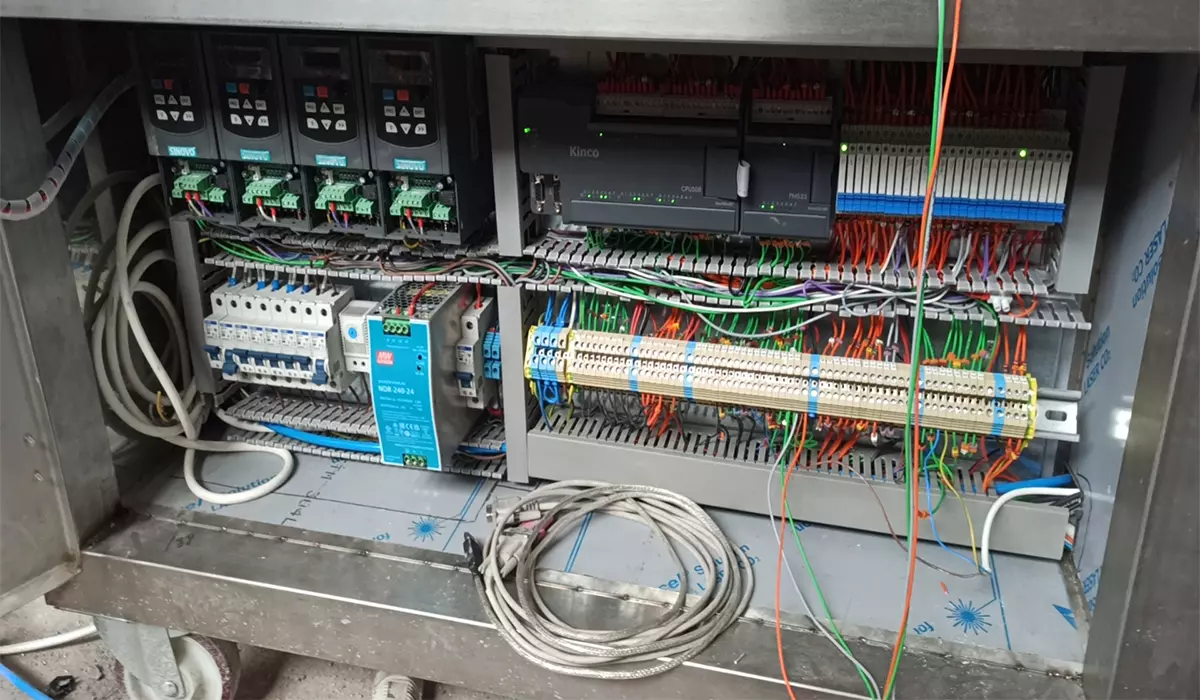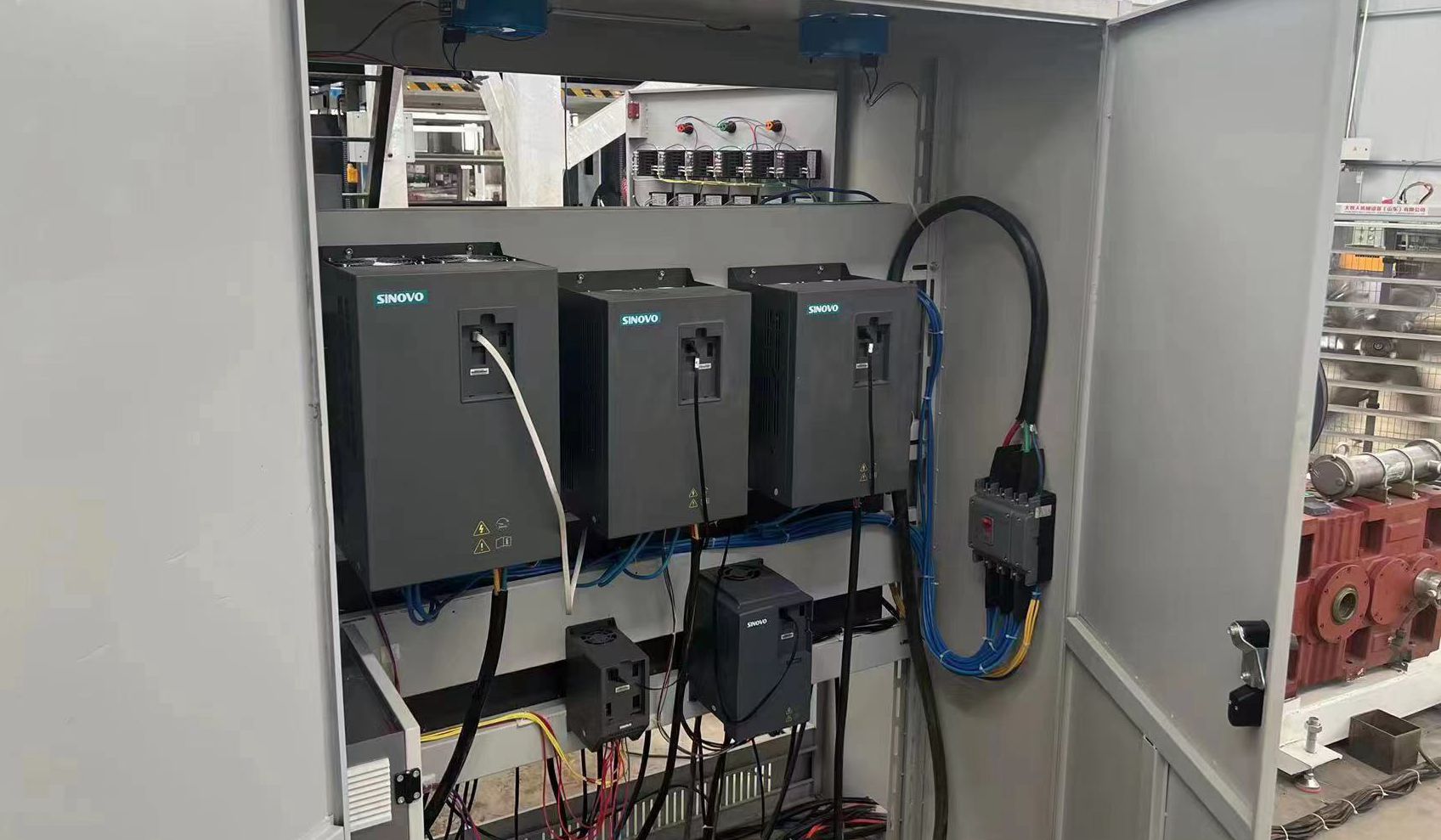Variable Frequency Drives (VFDs) play a pivotal role in industrial applications, offering precise motor speed control and energy optimization. To harness their full potential, meticulous attention to wiring is imperative. This article explores essential rules and considerations for wiring VFDs to ensure safe and efficient operation.
Shielded Cables for Signal Wiring:
Employ shielded cables for signal wiring to minimize electromagnetic interference (EMI) and radio-frequency interference (RFI). This is crucial for maintaining signal integrity, preventing erratic behavior, and ensuring optimal VFD performance.
Proper Grounding:
Ensure robust grounding by connecting the VFD to a reliable ground source. A solid ground connection dissipates excess electrical energy, reduces the risk of electrical noise, and enhances the overall stability of the VFD system.
Separate Power and Control Wiring:
Maintain a clear separation between power and control wiring to prevent cross-talk and interference. This separation is essential for avoiding signal distortion and ensuring the VFD operates according to its design.
Twisted Pair Wiring for Control Signals:
Opt for twisted pair wiring for control signals to enhance noise immunity. The twisted configuration helps cancel out electromagnetic interference, safeguarding the integrity of control signals and promoting consistent VFD performance.
Avoiding Cable Congestion:
Prevent cable congestion to mitigate overheating risks and signal interference. Proper spacing between cables minimizes the potential for electrical noise to affect the VFD, contributing to sustained reliability.

Routing Power Cables Away from Control Cables:
When routing power and control cables in close proximity, prioritize the separation of power cables from control cables. This precaution reduces induced voltage and minimizes the risk of electromagnetic interference impacting the VFD’s functionality.
Voltage Drop Considerations:
Factor in voltage drop in power cables by selecting appropriate wire sizes. Undersized cables can lead to voltage drop, adversely affecting VFD performance and potentially causing operational issues.
Use of Ferrite Cores:
Consider integrating ferrite cores on cables to suppress high-frequency noise. Ferrite cores act as passive filters, mitigating electromagnetic interference and fostering stable VFD operation in diverse industrial environments.
Respecting Manufacturer Guidelines:
Strictly adhere to the manufacturer’s guidelines and specifications for wiring. Manufacturers provide comprehensive instructions on cable types, lengths, and routing, ensuring optimal VFD performance and longevity.
Motor Cable Length Considerations:
Pay careful attention to motor cable lengths, as excessive lengths can lead to voltage spikes and impact motor performance. Adhering to recommended cable lengths helps maintain proper voltage levels and ensures motor reliability.
Appropriate Cable Shielding:
Select cables with appropriate shielding tailored for VFD applications. Proper cable shielding protects against external interference, fortifying the VFD against potential disruptions caused by electromagnetic disturbances.
Temperature Rating of Cables:
Choose cables with temperature ratings suitable for the operational environment. Cables with the correct temperature rating contribute to reliable VFD performance, particularly in environments with varying temperature conditions.
Documentation and Labeling:
Maintain comprehensive documentation and labeling of wiring connections. Clearly label cables and connections for easy identification during troubleshooting and maintenance, facilitating efficient system management.
By diligently following these guidelines, practitioners can optimize the wiring of Variable Frequency Drives, mitigating the risk of signal interference, ensuring proper grounding, and ultimately enhancing the overall reliability and longevity of VFD systems in industrial settings.
Variable Frequency Drives (VFDs) play a pivotal role in industrial applications, offering precise motor speed control and energy optimization. To harness their full potential, meticulous attention to wiring is imperative. This article explores essential rules and considerations for wiring VFDs to ensure safe and efficient operation.
Shielded Cables for Signal Wiring:
Employ shielded cables for signal wiring to minimize electromagnetic interference (EMI) and radio-frequency interference (RFI). This is crucial for maintaining signal integrity, preventing erratic behavior, and ensuring optimal VFD performance.
Proper Grounding:
Ensure robust grounding by connecting the VFD to a reliable ground source. A solid ground connection dissipates excess electrical energy, reduces the risk of electrical noise, and enhances the overall stability of the VFD system.
Separate Power and Control Wiring:
Maintain a clear separation between power and control wiring to prevent cross-talk and interference. This separation is essential for avoiding signal distortion and ensuring the VFD operates according to its design.
Twisted Pair Wiring for Control Signals:
Opt for twisted pair wiring for control signals to enhance noise immunity. The twisted configuration helps cancel out electromagnetic interference, safeguarding the integrity of control signals and promoting consistent VFD performance.
Avoiding Cable Congestion:
Prevent cable congestion to mitigate overheating risks and signal interference. Proper spacing between cables minimizes the potential for electrical noise to affect the VFD, contributing to sustained reliability.

Routing Power Cables Away from Control Cables:
When routing power and control cables in close proximity, prioritize the separation of power cables from control cables. This precaution reduces induced voltage and minimizes the risk of electromagnetic interference impacting the VFD’s functionality.
Voltage Drop Considerations:
Factor in voltage drop in power cables by selecting appropriate wire sizes. Undersized cables can lead to voltage drop, adversely affecting VFD performance and potentially causing operational issues.
Use of Ferrite Cores:
Consider integrating ferrite cores on cables to suppress high-frequency noise. Ferrite cores act as passive filters, mitigating electromagnetic interference and fostering stable VFD operation in diverse industrial environments.
Respecting Manufacturer Guidelines:
Strictly adhere to the manufacturer’s guidelines and specifications for wiring. Manufacturers provide comprehensive instructions on cable types, lengths, and routing, ensuring optimal VFD performance and longevity.
Motor Cable Length Considerations:
Pay careful attention to motor cable lengths, as excessive lengths can lead to voltage spikes and impact motor performance. Adhering to recommended cable lengths helps maintain proper voltage levels and ensures motor reliability.
Appropriate Cable Shielding:
Select cables with appropriate shielding tailored for VFD applications. Proper cable shielding protects against external interference, fortifying the VFD against potential disruptions caused by electromagnetic disturbances.
Temperature Rating of Cables:
Choose cables with temperature ratings suitable for the operational environment. Cables with the correct temperature rating contribute to reliable VFD performance, particularly in environments with varying temperature conditions.
Documentation and Labeling:
Maintain comprehensive documentation and labeling of wiring connections. Clearly label cables and connections for easy identification during troubleshooting and maintenance, facilitating efficient system management.
By diligently following these guidelines, practitioners can optimize the wiring of Variable Frequency Drives, mitigating the risk of signal interference, ensuring proper grounding, and ultimately enhancing the overall reliability and longevity of VFD systems in industrial settings.
continue reading
Related Posts
Variable Frequency Drives (VFDs) and motors are integral components in industrial automation, each serving distinct yet interconnected roles in controlling […]
Variable frequency motors (VFMs) are crucial in modern industrial applications due to their efficiency and precise control over motor speed […]
Variable Frequency Technology (VFT) is increasingly being recognized as a game-changer in the industrial automation sector, particularly in applications involving […]



